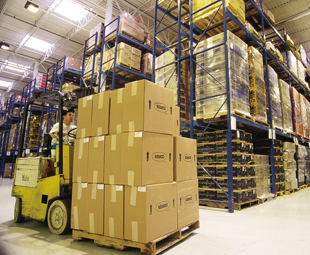Future-proof your warehouse

The rise of e-commerce has precipitated a change in logistics that has massive implications for 3PL warehouses, says John Ramsey Mabe, product manager at WiseTech Global.
“Global online retail spending reached nearly US$ 2 trillion (R26,68 trillion) in 2016 and is expected to double by 2020, putting tremendous pressure on warehouses and warehouse management systems (WMSs).
“These increasing demands for speed, accuracy and visibility mean that putting efficient, technology-driven systems in place is crucial to compete in the global marketplace,” he says.
Mabe suggests that split case picking could be the answer, despite being more complex and labour intensive than its larger-scale counterparts.
“Unlike traditional full pallet or case picking, split case picking involves individual products being picked from unique locations and placed directly into shippable cartons,” he explains.
“Variable demand has seen a shift from fixed weekly delivery schedules to same-hour, same-day, 24- or 48-hour cycles, with vastly increased picker travel time. With industry estimates suggesting that up to 60 percent of total pick and pack time is taken up by walking or moving product around and 55 percent of total costs in a warehouse are from manual labour, this can have a huge impact on a company’s bottom line.”
Making split case picking work in a warehouse requires a multifaceted approach that puts speed, efficiency and accuracy at the centre of the processes,” says Mabe. He suggests the following steps to optimise picking performance:
1. Minimise touches: Reducing touches should reduce costs. A robust WMS can enable picking and packing directly to the shipping carton, eliminating the need for a dedicated packing station.
2. Cartonisation: This automatically analyses each product’s dimensions, volume and weight and then determines the optimal carton size to pack order lines. Carrier-compliant shipping labels are printed at the time of order allocation and pickers simply put products (which have been pre-determined by the cartonisation algorithm) into the labelled shipping carton.
3. Segregate single-line orders: Single-line orders can generally be picked in large batches because they don’t need to be consolidated with other items. This eliminates the packing and sorting function.
4. Multi-order batch picking: Batch picking – the practice of picking multiple orders at one time – can be accomplished in a non-automated environment at a relatively low cost with pick trolleys. Rather than filling one order at a time, the picker will pick the products required for multiple orders in one pass through the warehouse.
5. Pick and pass: Pick and pass is an order picking methodology where pickers are assigned to specific zones within the warehouse. Cartons move between areas as the picks from the previous area are completed. Pick and pass is most effective in warehouses with a large number of products and a high volume of orders.
6. Slotting fixed pick areas: In slotted fixed picking, products are dedicated to one or more locations. Typically, each pick location is configured with minimum and maximum quantities for replenishment.
When orders are allocated in the WMS, the system will attempt to allocate the inventory from the fixed pick locations and, if necessary, create a replenishment order to refill the pick location. When deciding what products to slot, consider using the 80/20 rule: dedicate slots for the 20 percent of the products that make up 80 percent of the order volume.
Published by
Focus on Transport
focusmagsa




